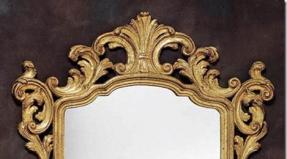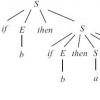The Tibetan Mastiff is the legendary guardian of the Tibetan mountains. Health Lessons from Tibetan Mastiffs The Tibetan Mastiff is Dangerous or Not
Comments: 0
Breed standard Tibetan mastiff f.
Origin: Tibet
Classification: Group 2. Mastiffs, Pinschers, Molossians and Schnauzers. Section 2. Mountain type. Molossoid breeds. No working tests.
Functional use: guard or guard dog, companion dog.
General characteristics: coarse, powerful type of addition with a developed skeletal system... It looks impressive, has a calm expressive look. Combines good health, endurance and strength, can work in any climatic conditions. It develops slowly: the male reaches its majority by the age of 4, the bitch by the age of 2-3.
Main proportions: The height at the withers is slightly less than the length of the body. The length of the skull, which is measured from the transition from the forehead to the muzzle to the occipital crest, is slightly shorter than or equal to the length of the muzzle (from the transition to the end of the nose).
Character: Submissive to commands. Independent. Reliable defender. Very loyal to his territory and family.
HEAD: Strong, broad, massive. In adults, the fold runs along the line above the eyes and down to the corners of the mouth.
Cranial
Stop: Pronounced.
Skull: Has a pronounced occipital protuberance; large, slightly rounded.
Front part
Eyes: Medium in size, oval in shape, set wide apart and slightly oblique. Dark brown to match the coat, with darker eyes preferred. The eyelids fit snugly.
Muzzle: Seen from the front has square shape... Wide, deep
Nose: Broad, with well-open nostrils. The color is as dark as possible.
Lips: well developed, well covering the lower jaw.
Ears: Set above eye level but below skull level. Medium in size, hanging, have a triangular shape, in a state of arousal they rise slightly. They fall forward, are close to the head. On the ears, there is a short, soft coat.
Teeth and Jaws: The teeth are tight. The jaws should have a full scissor bite (the incisors are vertical in the jaws and the upper ones go over the lower ones). A level bite is also acceptable.
Neck: Slight dewlap. The neck has a pronounced scruff, muscular, strong. The coat is protruding, thick, forming a mane (less pronounced in bitches).
FRAME:
Chest: Deep, moderately wide, ribs well rounded at the top. The lower part is dropped below the elbows. The chest part reaches the knee joints.
Back: Well muscled and straight.
Croup: horizontal, wide.
Tail: Located on the upper back line, that is, set high. It is of medium length. Fluffy. In motion and in an alert state, the dog holds its tail, freely thrown on its back and high.
LIMBS
FRONT: Covered along the entire length with dense hair, straight with corners.
Shoulders: Well muscled and well set.
Forearm: Straight, well-boned.
Ankles: Slightly sloped.
Knee joints: neither turned in nor out.
REAR: have pronounced angles. When viewed from behind, stand parallel to each other. Strong and muscular.
Upper thigh: Long and strong, with firm but not lumpy muscles.
Knee joints: curved
Hock joint: Set low and strong.
A vestigial finger is acceptable.
FEET: Round, massive, with thick hair between the toes.
Gait: Agile and resilient, the dog is able to move on any terrain, while showing flexibility. The gait is imperious, flexible, with a firm step. The movements are confident, springy, light enough, with a powerful push. When picking up speed, puts the limbs closer to the center line.
WOOL
Color: deep black with tan markings or without them; golden from rich beige to terracotta; blue with and without tan.
All shades of coat should be as pure as possible. Moderately tolerated white at the ends of the legs and a small patch on the chest. The markings should be located above the eyes, on the inside of the tail and limbs. Markings are also acceptable on the lips and around the eyes.
Quality: the coat is coarse, with a dense cover. Guard hair of medium length. In winter it has a thick undercoat, in warmer months it is more rare. The coat is coarse, straight, smooth and protruding. Males are more dense than females. Above the shoulders and neck, a dense layer of wool forms a mane. The limbs are densely covered with wool, the tail is fluffy. Curly or wavy, silky hair is not allowed. Quality is more important than quantity.
Height at withers
The minimum for bitches is 61 cm, for males 66 cm.
The male should have two developed testicles descended into the scrotum.
Defects:
Any deviation from the above norms is considered a defect, and its severity is assessed in accordance with the proportion of its severity.
Serious defects include:
Light shade of eyes or non-piercing gaze.
Ears are large or set low.
Restrained movement.
Growth below the minimum ( allowable rate up to 2 cm).
The ribs are barrel-shaped.
Weakened pigmentation of the nose.
Strong dewlap.
Light head or dangling.
Lack of physical fitness.
Strongly curved tail.
Sagging flews.
Strongly angulated hind legs.
Defects leading to disqualification
All other color types except those listed above.
Undershot or overshot.
Manifestation of fearfulness or aggressiveness.
TIBETAN MASTIFF - MYTHS AND REALITY Today, the Tibetan Mastiff is a fashionable breed. But is a dog of this breed suitable for every future dog-water? I will answer right away - no, not for everyone. Like a dog of any other breed. How do you know if the Tibetan Mastiff is right for you? Let's start with what this breed was originally intended for, how the selection was carried out both natural and artificial. The dog should have, first of all, good guarding qualities, be vigilant, especially at night (after all, both dashing people and wild animals make their raids more often at this time of the day, so it will be more successful. Therefore, today the Tibetan Mastiff is more active at night - “butterfly flew across the road at the light - the enemies are advancing! "However, this dog does not bark in vain. And by the voice of his dog, its timbre, the strength and intonations of the" conversation "of Tibet, the owner will immediately understand whether the house is in danger or the dog is scaring imaginary enemies, she just wants to "talk", or she is offended by the inattention to herself and you will not sleep with her for the campaign. there are other species of animals - for example, the most important rooster in the village sings first - he sings, he also finishes the song.) And the dominant male, who considers himself "the first guy in the village", has the same feature. In general, Tibet hardly sleeps at night or sleeps with open eyes, especially for a bitch feeding puppies. The Tibetan Mastiff needs freedom of movement. It is better to keep this breed in a private house, and live it in the open air. Therefore, the Tibetan aviary should be at least 2 by 3 meters so that the dog can “stretch its legs”. The height of the walking fence is individual - dogs can be jumpy, they love to look at the world from a height, observing the surroundings. Do I need to walk? It is highly desirable. And the muscles are formed correctly, and the limbs are developing correctly. It is only necessary to remember that during the period of intensive growth, the load should not be very intense (this is usually the age of puberty, from 7 months to a year, for each dog in different ways). In general, you shouldn't make your dog run after a motorcycle. But swimming is the sweetest thing. But a walk with Tibet will not cause any special problems. Even an elderly person can walk such a dog - not so huge Tibetan mastiffs, as in the photo with the help special programs"Draw". And the measure should be when planning breeding. In Russia, they love everything big and the larger the dog, the more beautiful it is for the Russian person (however, this has always been the case, the standards of the dogs of the USSR were strikingly different from the standards recognized by the world cynological community). However, you still need to remember that gigantism has its own very unpleasant problems. This is the possibility of developing ligamentous dysplasia in molossians, and problems in further movements, and problems of metabolism and everything that goes along with it. Therefore, I personally am more impressed by the version of the approach voiced in the breeding position of the RKF - we breed healthy dogs. And in everything there should be a measure - both in the strength of the skeleton (again, remember that such a dog will not be able to move freely in the highlands), and in the amount of wool (and who is behind it when grazing cattle in the mountains of Tibet with shampoos, balms, and powerful courted compressors ?!), and in the amount of skins (I'm talking about the dog's suspensions now). By the way, about grooming your hair. Based on the experience of working with various dogs, the Tibetan Mastiff was the easiest for me to care for my coat. The dog does not require constant combing and washing, the undercoat fades out in a very peculiar way - once a year "curls" are formed from the undercoat, twisted strands are formed, which then fall off or are removed quite easily. And until such a strand dies off, you should not remove it. And the dead coat brightens during molting, becomes gray in black dogs and you can immediately understand that the molt has begun and you need to work a little, however, only once a year. During the rest of the time, the dog practically does not shed its coat. In cold weather, he sleeps peacefully in the snow. And, most interestingly, it does not smell like "dog." Even the wet wool of Tibet does not smell bad. And some dogs (I am not exaggerating at all!), Including bitches and puppies, smell of pollen (the smell is similar to the smell of "pollen", ie pollen collected by bees). Tibetan Mastiff grooming is not difficult, does not require great effort and great talent. You just need to feel your dog and remember that by grooming we do not so much hide the shortcomings of the dog (the judge is not blind, and he even has hands to feel the dog), as we emphasize its merits. And it is also worth remembering that when the embryonic development of the future puppy occurs, then during education on early stages embryogenesis of four pools - ectoderm, endoderm, mesoderm and neural crest from the last pool is formed and nervous system , and, oddly enough, the muscles that lift the follicle of the guard hair of the dog. Therefore, if a dog has stress, then, depending on the form of reaction, either the mane will automatically rise, or it will lie down and by no means, except for one thing - to calm the dog and bring it to a state of balance, the mane will not be raised. In dominant dogs, the mane rises with arousal, as dogs are confident in themselves and defend their superiority over individuals of their sex by their appearance, or "show off" in front of "ladies". For a cowardly dog, everything will be exactly the opposite. Therefore, having basic knowledge of the physiology of canines, you can avoid unnecessary expenses for the purchase of wool products and mistakes, acting as a handler of your dog at the show. Well, combing the dog, making the body, ears neat and shaping the "cat's paw" with a haircut is the groomer's job. And the owner himself will cope, this will be taught in the dog breeders club - a breeder or your breeder. And about nutrition, which most often worries future owners of Tibetan Mastiffs. It is believed that large dogs eat a lot. Perhaps a number of breeds from the Molossian group do just that. But not the Tibetan Mastiff! Novice dog breeders should remember that dogs sometimes arrange for themselves "fasting days" - they do not eat for 1-2 days (but they will definitely hide food - "for a rainy day!) And indeed, who in the mountains of Tibet every day served food to the dog on a tray ! We must, of course, remember that many illnesses begin with refusal to eat. But if the dog is cheerful, active, drinks water, the temperature is normal and you have not removed ticks from it, then, most likely, this is the very unloading of the body, the heritage of the ancestors. Sometimes the dog reacts in this way to the approaching heat. In general, the Tibets predict the weather. Our dog, being a puppy, always hid his favorite toy in the booth if rain was expected the next day. But if the weather was gloomy, but precipitation was not supposed to happen, the toy remained on the floor of the aviary. Checked repeatedly! And once again about food! Today, there are many balanced feeds, expensive and not so. It is better to consult with the breeder, to which your cheek is accustomed. And if you nevertheless decide to change the feed, then you should do this by gradually increasing the dose of the new feed over 5 days. So there will be no disruptions in the work of the intestines. And in general for a dog, the more monotonous the food, the better, if only it was complete in composition. And about the amount of food ... Our adult dogs eat 300 g of GOLDEN EAGLE holistic food per day and that's all! Tibet needs no oranges, pineapples, and even more so pig noses and tails! And at the right choice feed does not need additives - vitamins, minerals. Professional food has it all. And for economical people it is not harmful to calculate how much it costs to feed a dog every day for all feeding options - expensive and high-quality food, cheap, plus vitamins, or porridge with meat (again, with vitamins and minerals, because the puppy's bones are made of air will not grow, you need "building material"). I emphasize once again that the Tibetan Mastiff is not a voracious dog, does not consume food in buckets, does not beg at the table (if you don’t want to), and the giants don’t need a lot of food, especially in the first year of life. The dog must first grow bones. That is, the dog should be moderately thin. Fat deposited in a puppy for up to a year (and the Tibetan Mastiff matures for a long time, but also lives for a long time - up to 18 years) is then difficult to "drive away", it is not replaced by muscle mass and the result is not very comforting - a sagging back, incorrect movements, metabolic disorders. The Tibetan Mastiff is not a lapdog; rather harsh conditions in nutrition are suitable for him, he is more comfortable in them. And the dog will be healthier. Speaking of health. The Tibetan Mastiff is a dog that is quite resistant to infections, rarely gets sick, gives birth successfully, knits on its own. Vaccinations, of course, are necessary - we will not risk the dog's health! And about the most important thing - education and love. The Tibetan Mastiff is an independent breed, decisions are often made without human participation, there was no selection when breeding the breed to obey commands. That is, the dog does not wait for your command, but makes a decision itself, like its ancestors, there was no time for commands to wait for the wolves to attack, or the enemies-destroyers. Therefore, the dog lends itself to training, but reserves the right to make a decision. And raising a puppy should start from the first day of the dog in the house. A young puppy needs you very much. This begins from the moment when a person first picked up a squeaking lump. For if you do not stroke a still blind puppy, he will not feel the smell of a person, the warmth of his hands, then by 3 months it will be too late to raise such a dog. She will not need a man, let alone obey him - even more so! The Tibetan Mastiff loves the whole human family and, perhaps, this is the only dog breed that can change the leader of an interspecific pack. Rather, it treats all family members equally and with equal respect, takes care of the little ones and the elderly (this is why this breed is so hated by the peoples who in the past hunted robbery raids). The main thing is that a person who claims to be the leader of the pack must have an inner core - that strength of mind that any dog feels, and Tibet - especially acutely. With such a dog, you cannot quarrel - it will side with the one who is right, quite intuitively. How it happens - from the field of the unexplored! And for those who want to see their dog as the star of exhibitions, you need to remember that an exhibition is also a dog's work, while handling is a kind of training for its successful implementation. And exhibition handling is a useful thing for volume. physical activity necessary for a dog, and for the socialization of any animal. It is only necessary to remember that the Tibetan Mastiff is a guardian of the territory and its lover, therefore, so that the dog does not begin to protect "its" territory at the exhibition and behaves decently in the ring, you need to observe that temporary measure, individual for each dog, which will allow your pet to get comfortable at the exhibition, but also will not allow the start of the ring's security work. And yet - the Tibetan Mastiff is not a food worker, the true reward for the dog will be your love and praise, and not a piece of cheese, unless, of course, you persistently and for a long time accustom the dog to food reinforcement. Well, perhaps that's all - about the characteristics of the breed when choosing it and making the final decision. For me personally, not a very healthy and not at all young woman, the Tibetan Mastiff is quite capable of caring for and managing a dog of this breed. Everything is simple - the dog is balanced, moderately active, not intrusive, does not require long-term care, refined and abundant feeding, it involuntarily has to be respected. The Tibetan Mastiff also makes you think, analyze and, as always in dog breeding, learn. Well, that's just fine - dog breeders are always learning! Someone will say - she was rationally saying there, the great owner of the Tibetans ... There is also smarter and more experienced ... It is very possible. I have no complaints. I am proud not only of my own, but also of other people's dogs. Here in our city Olga Milkina's Tibetan Mastiff, besides being a Champion of all kinds, has passed tests in canistherapy! For the first time in this breed in Russia! I am proud because I love all Tibetans. I want this breed to be acquired by people who will never part with their dog, it will be very difficult for such a dog. Therefore, I am trying to help people make their choice. Or maybe I just wrote this ode to the Tibetan Mastiff, because I just love my dogs ?! I love a strange, unstoppable, but, thank God, shared love! What I wish to each of you sincerely and with all my heart! With respect to lovers of Tibetan mastiffs and all dog breeders, Natalya Stanishevskaya, judge of the RKF-FCI for breeds, head of the SVET TENGRI kennel, general director of LLC DRUG Consulting Center, head and teacher of cynology and zoopsychology of the VERSHINA training center, President of MPOO "Siberian Association for the Support of Canistherapy", teacher of animal psychology at ANO SPO "ATKiP" and just a fan of Tibetan Mastiffs.
Perhaps not one breed in the world is surrounded by so many rumors, secrets and legends as huge mastiff-like dogs that have accompanied shepherds and wandering Buddhist monks for more than five thousand years.
Huge, possessing incredible physical strength and well-developed intellect, they were often not so much watchmen as loyal friends and family members of the indigenous population of Tibet.
Natural isolation and reverent attitude towards the huge hairy friends of man made the Tibetan Mastiff a real one. dog legend, about which many have heard, but few have seen alive.
Plain dogs, found in Northern China and on the territory of the Gobi Desert, often interbred with guard dogs of alien merchants passing with caravans along the Great Silk Road, or with animals brought by travelers from distant countries - this is how the ancient aboriginal breeds bred by the local population became smaller and disappeared. thousands of years ago.
And only in hard-to-reach mountainous regions, where for centuries the foot of a stranger has not set foot, dogs of the purest blood have survived. Those from whom, according to legend, the molossians of Ancient Rome and the pickling dogs of Egypt originated were considered a real national treasure and for a long time were not surrendered into the hands of strangers.
History of the origin of the breed
For the first time, Europe saw Tibetan Mastiffs in mid nineteenth century... It was then that Baron Harding, the future Viceroy of India, presented a young male mastiff to Queen Victoria. Four decades later, King Edward VII brought two more dogs of this breed to London.
The gigantic growth of mastiffs, thick hair and luxurious lion's mane caused bewilderment and even fright of ordinary Englishmen, who were not accustomed to such dogs.
Most progressive Londoners, including renowned zoological scientists, considered animals to be true wild beasts, whose place in a fenced-in cage. It was there, in the city zoo, that the only mastiffs in the civilized world lived for a long time, serving for the amusement of the public for many years and even bringing offspring in captivity.
External appearance
The height at the withers of a standard breed reaches 75 cm, the weight of the Tibetan Mastiff often exceeds 65 kg. Distinctive feature dogs of this breed are considered dense coat with a luxurious, densely padded undercoat... The unique density of hair leads to the fact that animals are not afraid of even forty-degree frosts, with pleasure resting right in the snow.
Unlike factory animals, aboriginal mastiffs molt only once a year- as a rule, this event takes place in late March - early April. A thick dense fur coat during this period needs especially careful care.
Breeders of the breed recommend thoroughly combing the pet out several times a day during this period, achieving a complete waste of dead wool. Fortunately, after a few days of hard work, all the troubles are settled, and for the rest of the time the dog's fur coat does not give absolutely any trouble to the new owners.
Like most primitive breeds, Tibetan Mastiffs are considered dogs of late formation... Bitches grow up to 2.5-3 years old, and males do not finish development until the age of 4 years. Another interesting physiological fact is the ability to reproduce. Unlike most other dog breeds, a Tibetan Mastiff bitch is in heat only once a year, starting most often at the very beginning of winter.
Character
There are many legends about the protective qualities and devotion of the Tibetan mastiffs, attributing to them enormous physical strength and willingness to give his life for his family or the property of the owner. Most of what is said about these dogs is absolutely true.
This breed really, like no other, is capable of miracles of dedication and determination in non-standard situations. Perceiving the owner not as an absolute leader, but rather as an equal partner, the Tibetan Mastiff believes that he himself has the right to make decisions about his own actions in the event of a threat.
Enormous physical strength it combines with fantastic swiftness and ease, allowing in a matter of seconds to catch up and neutralize the intruder at any end of the entrusted area. Natural cunning and high intelligence allowed dogs of this breed to act even against firearms. And, what is most interesting, in most cases, come out victorious in a fight with an armed man.
The disadvantage of such independence is that confident in his own strength, the Tibetan Mastiff often tries to decide for himself who can and who cannot be allowed to his beloved master. Therefore, if you do not want to part with a long list of friends whom the mastiff "did not approve", obedience and strict adherence to commands should be brought up in a puppy of this breed as early as possible.
Ruthlessness towards enemies combined with amazing tenderness to the household, and especially to the children of the owner. Ferocious watchdogs allow babies to do whatever they want with them, courageously enduring painful pinches or annoying harassment of little people. A condescending attitude towards children is a pedigree trait of the Tibetan Mastiff and has its roots in the distant past, when these stern fighters were entrusted with the most precious thing - defenseless kids, whom they guarded from wild animals and ill-wishers.
Another distinctive feature of this breed of dogs is the phenomenal, telepathic communication with the owner. Able to subtly sense the mood, the mastiff, even behind closed doors, shows concern if the owner is upset or upset. In their homeland, these mystical dogs were often put to bed in the bedroom. It was believed that these animals have the ability to drive away evil night spirits and can even protect the owner from death, which, according to legend, chose its prey at midnight moonless.
Specific recognizable barking Mastiff was especially appreciated by fans of the breed. A deaf, low voice, reminiscent of the blows of a copper gong, was considered a sign of purebredness, the special physical and spiritual strength of a pet. In order to give the sounds the desired tonality, the dog was often watered with warm buffalo milk, which gives the animal's barking timbre the desired velvety.
Those who decide to have this magnificent watchman at home should know that for a healthy full-fledged life, the Tibetan Mastiff needs an open sky overhead and a fairly large area for unhindered walking... In a city apartment, the dog will very soon begin to wither, get sick and may even die of melancholy.
The harsh, full of hardships, the life of the ancestors left an imprint on the character of the animal. Dogs of this breed are amazing unpretentious in food... For thousands of years, the food of herding dogs in the mountains of Tibet has been barley chatter, lightly flavored with grated feta cheese. Since then, the heirs of the legendary guards have been rather restrained in their food, taking food in small quantities and only when they deem it necessary to support their forces.
Former keepers of the herd, Tibetan Mastiffs loyal to other pets... Despite its enormous strength, a dog of this breed will never offend even the weakest chicken in the master's yard. But dogs are especially fond of the representatives of the feline tribe.
Owners should be prepared for the good-natured giant to take on the role of an older brother or become a caring nanny for tiny newborn kittens, and then, when the cat grows up, he will carefully look after a friend, slipping him the most delicious pieces or carefully licking the cat's fur.
The Tibetan Mastiff breed is considered one of the oldest in the world. It takes its roots from Tibet - a mysterious and distant land. For a long time, representatives of this breed were not exported from the country: it is not that the laws forbade it, but rather the loss of the high mountainous regions played a role. At the same time, isolation has served well in terms of maintaining the purity of the breed and its unique character traits: strength, endurance, loyalty, independence, poise and others. These dogs do not care about difficult climatic conditions or a difficult lifestyle.
Description and characteristics (Photo)

- Country: Tibet
- The weight: 55-60 kg - female, 64-77 kg - male
- Height: 61 cm - female, 66 cm - male
- Sexual maturity: 3 years old female, 4 years old male
- Life Expectancy: 10-15 years old
- Structure: strong
- Proportions: body length is greater than height
- Bite: scissor, let's say straight
- Color: black or red with tan markings, a small white patch on the chest is allowed
- Wool: medium length, straight, coarse, fine, rich undercoat
- Group: pinschers, schnauzers, dog-like
- Application: sentry, guard dog, companion
- Recognized: FCI, RKF, AKS, SKS, KS
- Other names: do-khai (or do-hi), tibetan dog, tibetan moloss, tibetan dog
 The character of the Tibetan dog is stubborn and independent. She is smart and has an increased sense of self-esteem, has a developed intuition and requires increased attention from the owner.
The character of the Tibetan dog is stubborn and independent. She is smart and has an increased sense of self-esteem, has a developed intuition and requires increased attention from the owner. - Tibetan - companion, who loves souls in all members of his own "pack" - the owners, their children, their pets. However, he is extremely suspicious of outsiders. For centuries, the instincts of a guardian and protector, educated, can work even on adults or small guests of the owners, if the pet considers their behavior aggressive. True, if the dog is sufficiently educated (otherwise it is simply dangerous to keep him), he will obey the owner and will not interfere, but he will not lose vigilance, observing the events.
Playing with creatures different sizes, the Tibetan Mastiff easily measures his own strengths with their weight and height and does not cross the dangerous line with children, cats and other "trifles", which they seem to him.

Did you know? The bark of the Tibetan Mastiff is unique, it is a particularly valuable characteristic of the breed. In Tibet, they were specially given warm milk to drink in order to preserve the density and velvety timbre, comparable to the sound of a copper gong.
 The Tibetan Mastiff is not suitable for everyone - its purpose is to protect and preserve, and before starting, you should carefully study the description of the breed and its features, communicate with the breeders of the breed and owners.
The Tibetan Mastiff is not suitable for everyone - its purpose is to protect and preserve, and before starting, you should carefully study the description of the breed and its features, communicate with the breeders of the breed and owners. The origin of the breed
There is a hypothesis that the Tibetan Mastiffs, while retaining their original appearance, at the same time became the progenitors of most of the eastern breeds of dogs. 
Did you know? Even in the early Middle Ages, they served as guides, protectors and watchmen for merchant caravans, while fulfilling, as necessary, the duties of rescuers, pulling people out from under avalanches and even warming them with their incredible wool.
For a long time, the purity of the breed was observed, thanks to which even now the Tibetan Mastiff cannot be confused with any other dog.
At different times, with varying degrees of success, the breed was exported to the Central Asian and Mongolian territories, as well as to Mesopotamia, from where it was further spread to ancient Greece, and from there to the Mediterranean region.
For the first time, the Tibetan Mastiff is mentioned in the Chinese written source "Shu-King", dating back to 1122 BC.
Did you know? According to information of varying degrees of reliability and legend, such a dog belonged to Buddha, Alexander the Great, Queen Victoria, US President Eisenhower, Alain Delon and other prominent personalities.
In the 20th century, the whirlwinds of history burst into ancient Tibet, and, among other things, unhappily influenced the breed, which almost completely disappeared in its homeland, but was rescued in Nepal. It was from there that she was brought to America and Europe, where she is bred to this day, but the Chinese branch is still considered the most authentic, purebred and valuable.
The largest in the world
This breed is one of the largest in the world. The world's largest Tibetan Mastiff named Li Shung in 2013 yielded only 0.5 centimeters to his “colleague” the English Mastiff. At the withers, according to measurements, its height was 90 centimeters! However, Li Shung did not lose: he received the deserved title of the most beautiful Tibetan mastiff in the world.
Did you know? Registered record for largest Tibetan mastiff-113 kilograms, however, it is known about another representative of the breed, who lived in the 20th century and weighed 120 kilograms!
Work is underway to lighten the breed's weight as it brings problems inherent in large breeds - weak joints. 
How to choose a puppy
Selection rules:
- Having studied the information about the Tibetan Mastiff, breed standard, characteristics and features, having seen enough photos of representatives, or maybe, having met at least one "original", having talked with breeders and owners, having found out the price of puppies, you decided that the Tibetan Mastiff is your dog. You know how it looks and behaves, what care it requires, where you will live and walk, what to eat, in a word - armed with theoretical knowledge and intend to move on to practice.
- In the process of communicating with people associated with Tibetans, you probably have already picked up a kennel in which to look after your dog. If not already, you should look at the sites of several, find out information about the puppies that are already in stock and about the litters that are planned.
Important! Tibetan dog bitches have one estrus per year, in autumn or winter, therefore, babies have to be expected from about November to March.

Did you know? The “tan” marks above the mastiff's eyes, according to legend, are the second pair of eyes that can look into the soul. They give the impression of a never sleeping dog. The white spot on the chest is located opposite the brave heart and is its sign. The spot is called "the touch of the Buddha".

Important! The bitch has a more flexible, compliant and affectionate character, while the male is easier to care for. Beginners are advised to opt for a bitch, it will be easier to get along with her and get used to such a specific dog, and she-to the owner.
 Price
Price
The Tibetan Mastiff is not cheap. However, the price can vary greatly depending on the class, size, features, breeding location, and so on.
So, the cost of a purebred dog can range from 3 to 250 thousand dollars, and this is not the limit. Do-hee confidently hold the record for the most expensive dog in the world, because this is one of the oldest breeds in the world, which has not lost its purebredity and valuable qualities.
Did you know? The most expensive dog in the world- a Tibetan Mastiff named Chief, he was bought for $ 1,600,000 in 2012, beating the record from his "colleague" bought the previous year for $ 1.5 million. In subsequent years, the record was not broken, but the Tibetans retained the nomination.
It is not at all necessary that the relative cheapness of a puppy from the kennel means that he has a flaw. The inexperience of breeders can play a role, their desire to quickly get rid of an existing litter or a small number of certificates, awards and exhibitions from dog parents. 
Choosing for yourself big dog in general and the Tibetan Mastiff in particular, you must understand what their characteristics and working qualities are. The ancestors of the Tibetans were hunters, shepherds, guards, therefore the best place for such a dog - a country house with a decent size adjacent territory. He is supposed to walk a lot and exercise physically; for this, a large area is perfect, where the animal will feel like a boss.
Thanks to its magnificent fur coat, the dog will feel good even in the most severe frosts. It is a good thing to sleep in a snowdrift, having frolicked in it before, is a common thing for a Tibetan.
It should be borne in mind that puppies still want natural food, from which you can gradually, if there is such a need, transfer to dry.
Dry food should be premium (it's stupid to buy a dog for big money and ruin its health with cheap food), designed for this breed and meeting the needs of the animal.
There are several rules, the observance of which will ensure the health of the pet:
- Mixed food is prohibited - either natural or dry food.
- Overfeeding your pet is harmful.
- No need to soak dry food pellets in water or milk.
- A sharp change in food will affect the well-being of the pet, you need to transfer it gradually, observing the reactions and health of the dog.
- Do not feed puppies with foods intended for a different age.
- Food should not be hot, smoked and river fish are prohibited.
- It is necessary to monitor the completeness of the diet when planning a natural diet or studying the composition of commercial feed.
- The dog should feel good even during periods of refusal to eat, not be thin or too fat.
- Pets living in the open air should add the proportion of protein foods in the diet.

Water
Whatever the dog eats, it should always have access to clean fresh water, this is especially true for the summer time, since given the conditions of its natural habitat, it may face heat or sunstroke, although usually representatives of this breed tolerate heat well.
As a dish, it is better to use special drinking bowls for tall rocks on a rack with which you can adjust the height.
Features of training and education
Possessing high intelligence for dogs, Tibetan Mastiffs are capable of quick assimilation of commands. If the animal feels the authority of a person, training is easy and joyful. That is why relations should be built on mutual respect - the results will be faster, more tangible and of better quality.
Important! In no case should Tibetan Mastiffs be beaten! They fail to understand that such cruelty serves them as a punishment from which they must learn a lesson. Also, you can not punish the dog if the results of the offense are discovered after a while. No poking of the nose will make the animal comprehend the connection, because they have no concept of time and abstract thinking. But aggressive behavior will generate a backlash and anger the beast.
In order for the dog to have a friendly and balanced character, it needs socialization: getting to know as many people, animals, places as possible, so to speak, broadening its horizons.  should start at puppyhood, the longer you put it off, the more difficult it will be to cope with a dog, which, due to its size and characteristics inherent in the breed, simply needs to become friendly and human-oriented, otherwise, why start it if you cannot cope? It may be dangerous.
should start at puppyhood, the longer you put it off, the more difficult it will be to cope with a dog, which, due to its size and characteristics inherent in the breed, simply needs to become friendly and human-oriented, otherwise, why start it if you cannot cope? It may be dangerous.
If you do not have your own experience, you should turn to professionals who will help raise the animal and teach the owner to handle it.
Such dogs will like it better if their place is near the owner. But their huge size and sanitary considerations do not always allow this option to be realized. In this case, the animal should be built that is spacious enough for an adult and dry.
If the dog is punished by sending it to the booth with the command "place" in a stern voice, then it is by no means possible to take it out of there in order to punish it additionally. One offense is one punishment.
During training with early age the dog should:
- Weaning off jumping on people with their paws is scary to imagine if such an adult carcass jumps.
- Blowing passers-by - with his thoroughbred voice, you can get serious trouble.
- Damage furniture, shoes, wires !, household items.
- Indulge in mud baths.
Training in a leash, collar and muzzle is mandatory, but it is not recommended to keep the dog on a leash and in a collar all the time to maintain the exterior.
It is obligatory to walk, play, run for a long time and it is interesting. Tibetans love to wallow in the snow, mess with children and other animals. Training includes imprinting- instilling confidence in a person, socialization, as well as the study and assimilation of commands that will allow you to control the animal.
Imprinting is practiced from 3 to 7 weeks of a puppy's life, includes techniques designed to convince him that people with him are of the same species, and they should not be harmed. In particular, it requires a lot of petting and playing with it, stimulating the desire to communicate with a person through the methods available to the dog.
The socialization course runs from 7 to 17 weeks and includes out-of-focus walks. It is desirable to walk in a large company: people, other dogs. During these educational walks, the pet learns to react to strangers, other animals, cars and other components of the human world. Contact with reality and its manifestations will strengthen the nerves and character of the dog. If you have been walking for a long time and have moved a long distance, your baby may need a stroller or carriage for way back, on the handles, perhaps, it is hard to carry such a puppy.
Important! It is impossible to tire the puppies on purpose, they must sleep a lot during their growth, and sometimes they fall asleep so deeply that it becomes like a lethargic dream.
If the baby has a desire to run up the stairs, let him go up as much as he wants, and down he needs to be lowered, not allowing himself to be exposed to the risk of falling face down, getting injured and permanently ruining the exterior.
Common diseases
The antiquity and purebredness of the breed and centuries of evolution have provided the Tibetan Mastiff with an enviable immunity. They almost never do. It is unlikely that a responsible owner who has acquired a purebred representative of the breed will face at least one of these diseases, but it is definitely worth arming yourself with the knowledge about them.
- Dysplasia and hip joints.
- Autoimmune hypothyroidism.
- Hypertrophic neuropathy.
- Osteochondrosis dissecans.
- Panostitis.

Was this helpful?
2
times already
helped



















